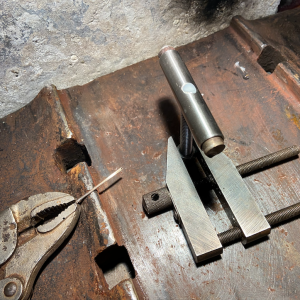- Joined
- Dec 3, 2020
- Messages
- 227
O man I looked at a Meco Midget - very nice and very spendy too.
I didn't know they were expensive, I got mine for free. I bought a gas fluxer, which adds liquid flux into the fuel line before it gets to the torch. ("The flux is in the flame!" is their motto.) Anyway I bought one used off ebay, very crusty, cheap because it was so ugly (nice now after a rebuild), and it came with a Meco Midget attached, that the ebay description didn't even mention. Also crusty and beat up, but also plenty nice now after a rebuild.
The Midget is amazing, so small that your hand covers it almost completely, with just the neck tube that goes to the tip showing outside your paw. And yet it takes tips that make a big roaring flame if that's what you want, even a rosebud is available. It's a proper aircraft torch, not a jeweler's "little torch". The neck tube comes in several lengths, with the long one recommended if you're using really big flames, to get your hand farther from the heat. The gas and O2 knobs are right there under your fingers, super easy to adjust while welding.
But I keep coming back to my Smiths AW1 for most things, probably because that's what I grew up using. I can't actually think of any reason not to like the Midget.



